Introduction and Background:
In the U.S., the end of October is traditionally marked by the celebration of Halloween. In greater America, however, another holiday emphasizing fun, food, and costumes calls attention to the passing of time. Dia de los Muertos, or Day of the Dead, is celebrated in Mexico and throughout Latin America on November 1 and 2, All Saints’ Day and All Souls’ Day, respectively (click here for help pronouncing Spanish words). On the surface, Dia de los Muertos and Halloween appear to have much in common, but a closer look at customs tells us otherwise.
The purpose of Dia de los Muertos is to honor the memories of deceased loved ones by having parties, displaying their favorite items in ofrendas (altars), and participating in activities they once enjoyed. Celebrations highlight the idea that our ancestors are still with us in spirit. Acknowledging Dia de los Muertos in your setting provides children with a multicultural experience that extends autumn’s greatest lesson—the circle of life.
Suggested Activities:
- Compare/contrast Dia de los Muertos and Halloween with a Venn Diagram. Introduce the holiday by printing and sharing images of Dia de los Muertos and Halloween celebrations with the children. Draw a Venn diagram and list what the children have noticed about the holidays. Keep differences in each holiday’s respective circle and print similarities where the circles overlap. Review with the children what they learned.
- Make papel picado (pierced paper).
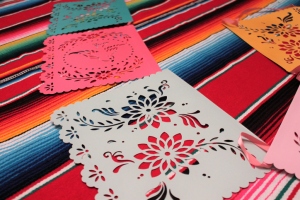 Papel picado is a traditional decorative item for Dia de los Muertos. It involves folding paper and making different cuts along the folds to reveal special designs when the paper is opened. Challenge children with strong fine motor skills to cut zigzags or squiggly shapes. String their creations together to make a banner and decorate your space.
Papel picado is a traditional decorative item for Dia de los Muertos. It involves folding paper and making different cuts along the folds to reveal special designs when the paper is opened. Challenge children with strong fine motor skills to cut zigzags or squiggly shapes. String their creations together to make a banner and decorate your space.
- Mold, sculpt, and discuss calacas and calaveras (skeletons and skulls).
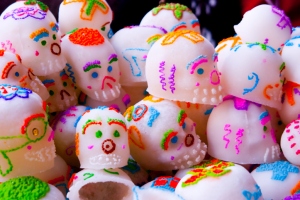 Traditionally, people will paint their faces to resemble a skull for parties and make sugar skulls to decorate and display (they are not eaten) at altars. You can offer face painting in your classroom and encourage the children to host a party in the dramatic play area. If supplies for making sugar skulls are a concern, you can make them out of clay, playdough, or papier-mache. Children can also use these materials to make bones and work together to construct a skeleton model. Extend the holiday’s focus on skeletons by discussing the human skeleton, how many bones we have, and why we need them. Compare the human skeleton to those of other animals. Ask families if they have X-ray images to share or inquire about images at a local clinic or doctor’s office.
Traditionally, people will paint their faces to resemble a skull for parties and make sugar skulls to decorate and display (they are not eaten) at altars. You can offer face painting in your classroom and encourage the children to host a party in the dramatic play area. If supplies for making sugar skulls are a concern, you can make them out of clay, playdough, or papier-mache. Children can also use these materials to make bones and work together to construct a skeleton model. Extend the holiday’s focus on skeletons by discussing the human skeleton, how many bones we have, and why we need them. Compare the human skeleton to those of other animals. Ask families if they have X-ray images to share or inquire about images at a local clinic or doctor’s office.
- Bake pan de muerto (bread of the dead).
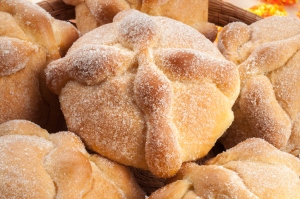 Click here for an easy recipe. Invite the children to help you prepare the ingredients. Typically, some pieces of dough are rolled out to resemble bones and are placed on top of the loaves before baking. Once the dough is prepared, give children small pieces to shape into bones and add to the loaves. As you work with the dough, review what you have learned about skeletons and how they relate to the holiday.
Click here for an easy recipe. Invite the children to help you prepare the ingredients. Typically, some pieces of dough are rolled out to resemble bones and are placed on top of the loaves before baking. Once the dough is prepared, give children small pieces to shape into bones and add to the loaves. As you work with the dough, review what you have learned about skeletons and how they relate to the holiday.
- Share marigolds.
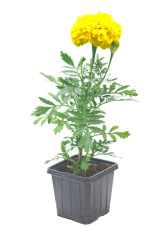 The scent and petals of the cempasúchil, or marigold, are believed to help spirits of the deceased find their way home. Marigolds are placed on altars and incorporated as decorations in festivities. For Dia de los Muertos, you can add marigold plants to your classroom. If possible, bring in a variety (African, French, Signet, etc.) and discuss the visual and olfactory differences among them. Talk with children about how the marigold’s symbolism and colors are reflections of autumn.
The scent and petals of the cempasúchil, or marigold, are believed to help spirits of the deceased find their way home. Marigolds are placed on altars and incorporated as decorations in festivities. For Dia de los Muertos, you can add marigold plants to your classroom. If possible, bring in a variety (African, French, Signet, etc.) and discuss the visual and olfactory differences among them. Talk with children about how the marigold’s symbolism and colors are reflections of autumn.
- Study monarch butterflies.
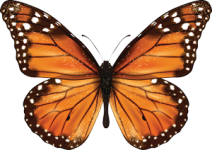 In keeping with the importance of spirits, monarch butterflies are believed to hold the spirits of the deceased. The monarch butterfly migratory season coincides with Dia de los Muertos; they arrive in Mexico from the U.S. and Canada on November 1. Help your children better understand the significance of monarch butterflies by looking at a map of their migration pattern, dramatizing the monarch butterfly life cycle, and talking about metamorphosis.
In keeping with the importance of spirits, monarch butterflies are believed to hold the spirits of the deceased. The monarch butterfly migratory season coincides with Dia de los Muertos; they arrive in Mexico from the U.S. and Canada on November 1. Help your children better understand the significance of monarch butterflies by looking at a map of their migration pattern, dramatizing the monarch butterfly life cycle, and talking about metamorphosis.
- Prepare an altar. Experienced teachers and those with children of Mexican and Latin American descent in their care may want to establish an altar in the classroom. Here, you can invite children and families to bring in images of deceased relatives and friends whom they would like to honor. Surround the images with unlit candles, flowers, and sugar skulls if you made them. Use the altar as a space for discussing memories of loved ones and/or enjoying pan de muerto as a group (encourage families to attend if possible). If children in your classroom celebrate Dia de los Muertos, invite their parents/caregivers to speak to the class about how they celebrate.
The following resources will assist you in introducing Dia de los Muertos to young children:
Books about Dia de los Muertos:
- Dia de Los Muertos by Roseanne Greenfield Thong
- The Day of the Dead / El Dia de Los Muertos by Bob Barner
- Clatter Bash! A Day of the Dead Celebration by Richard Keep
- Calavera Abecedario: A Day of the Dead Alphabet Book by Jeanette Winter
- Day of the Dead Crafts: More than 24 Projects that Celebrate Dia de los Muertos by Kerry Arquette, Andrea Zocchi, and Jerry Vigil
Books to support extension activities:
- Bones (Step-Into-Reading, Step 2) by Stephen Krensky
- The Skeleton Inside You (Let’s-Read-and-Find-Out Science 2) by Philip Balestrino
- The Fall of Freddie the Leaf: A Story of Life for All Ages by Leo Buscaglia
- Monarch Butterfly by Gail Gibbons
- Gotta Go! Gotta Go!: A Picture Book by Sam Swope
Finally, if you have electronic device, Free Music Archive offers a Dia de los Muertos playlist that you can add to your music center or play for group dancing.
Caution: When offering food, remember to seek parent/guardian permission and keep allergies in mind. Offer smaller bites or purees to infants and toddlers.
Back to blog listing